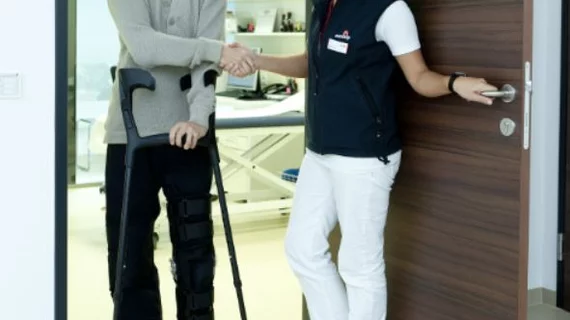Do image-guided corticosteroid injections impact COVID risk?
New research confirms the safety of image-guided intra-articular corticosteroid injections for patients who are at heightened risk of or are subsequently exposed to COVID.
The study centered on 1,960 patients who received such injections between April 2020 and February 2021. Experts found that not only did the shots not increase the incidence of COVID infections, but the patients who received them also appeared to exhibit lower rates of infection compared to the general population.
Given the known side effects that corticosteroid injections can have on a person’s immune system, these results should come as welcome news for patients with musculoskeletal pain and the providers who treat them, corresponding author for the study Joao R. T. Vicentini, with the Division of Musculoskeletal Imaging and Intervention at Massachusetts General Hospital and Harvard Medical School, and co-authors suggested:
“These findings provide reassurance to providers and individuals who rely on corticosteroid injections for the management of musculoskeletal pain during potential new COVID-19 surges, even in places with low vaccination rates.”
All participants were followed for a minimum of 28 days after injection, with some having relevant follow-up information available for up to 4 months. During this period, 10 out of 1,960 were diagnosed with COVID-19 within the first 28 days, and 43 diagnosed within 4 months. The 4-month cohort had an infection rate of 2.2%. In comparison, the infection rate for the state of Massachusetts was 7.5% during the same period.
Patients who received multiple injections were not found to have significantly higher risks of infection either. Those who were diagnosed with COVID appeared to have higher BMIs.
The results could be explained by a couple of varied factors, the experts noted. First, pre-screening patients for exposures and symptoms could have cut back on the number of at-risk individuals who received an injection; and second, the average age of the cohort was 59 ± 15 years and were likely abiding by increased safety measures due to the increased risks of infection for that age group.
The authors did acknowledge that their results were based on test results and symptomatic infections, which could have unintentionally excluded patients who had asymptomatic COVID.
View the detailed research in Radiology.
More on image-guided radiology procedures:
25% of patients undergoing transthoracic needle biopsy experience complications
VIDEO: Imaging contrast shortage is delaying procedures and causing rationing
Joint replacements significantly increase radiation exposure to interventionalists
Minimally invasive interventional radiology procedure delivers relief to OA patients
Reference:
The Relationship of Imaging-guided Corticosteroid Injections to COVID-19 Incidence in the Pandemic Recovery Period. Joao R. T. Vicentini, Sina Habibollahi, Steven J. Staffa, Frank J. Simeone, Arvin B. Kheterpal, Adam R. Graeber, Miriam A. Bredella, and Connie Y. Chang. Radiology.

